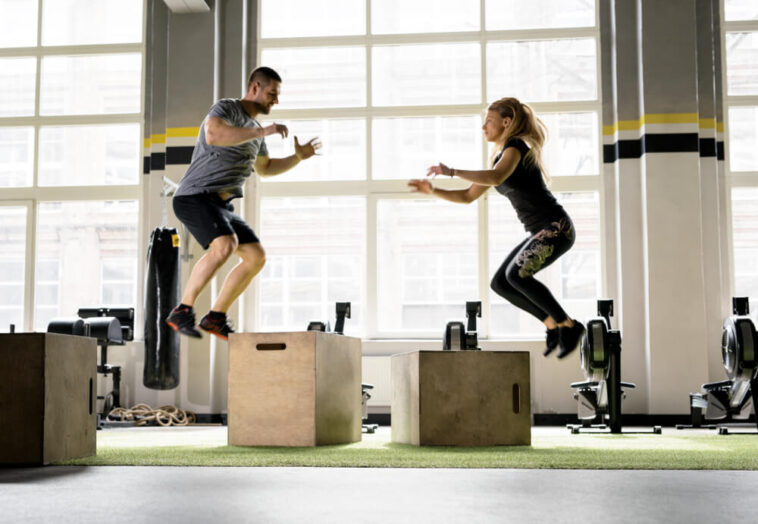Plyometric exercises, commonly referred to as “jump training,” are a type of physical activity that emphasizes explosive movements to improve speed, power, and overall athletic ability. These quick-twitch workouts use the stretch-shortening cycle, which involves brief muscle contractions followed by quick stretching. Although plyometric exercise is popular among athletes, people of all fitness levels can benefit from it. In this post, we’ll examine the advantages of plyometric exercises, discuss safety issues, and give a thorough analysis of several plyometric exercises.
Benefits of Plyometric Workouts:
- Increased Power: By boosting the body’s capacity to produce force quickly, plyometric activities increase muscle power. This results in increased speed and explosiveness when engaging in numerous activities including running, jumping, and throwing.
- Enhanced Athletic Performance: Plyometric training is extremely beneficial for athletes that compete in sports like basketball, soccer, volleyball, and track and field. Plyometric exercises can help athletes perform better since they increase their power and agility.
- Increased Muscle Strength: Plyometric workouts work several muscle groups, which increases the development of strength. Muscles that are stretched and contracted quickly engage more muscular fibres, increasing their overall strength.
- Increased Balance and Coordination: Plyometric exercises call for exact coordination between various muscle groups and joints. Plyometric exercise regularly can enhance neuromuscular coordination, which enhances balance and body control.
- Plyometric exercises are very strenuous and can burn a lot of calories, which helps with weight loss. Plyometric exercises can help you lose weight and cut down on your body’s fat percentage.
- Bone Health: Plyometric exercises’ high-impact nature promotes bone growth and enhances bone density, lowering the risk of osteoporosis and enhancing general bone health.
Safety Considerations:
Although plyometric exercises provide several advantages, it’s important to take safety measures to reduce the danger of injury:
- Warm-up: Plyometric exercises should always start with a thorough warm-up to improve blood flow and get the muscles ready for the rapid movements. Excellent warm-up exercises include dynamic stretches and modest aerobic activity.
- Gradual Progression: Start with simple plyometric exercises and build up gradually in terms of complexity, duration, and intensity. This lowers the possibility of overuse injuries and enables your body to adjust to the demands of plyometrics.
- Technique: Pay close attention to maintaining correct form throughout each exercise. Use your entire foot when you land, and contract your core muscles for stability.
- Appropriate Surface: To lessen the impact on joints and lower the risk of damage, carry out plyometric activities on a shock-absorbing surface, like grass or a rubber mat.
- Take Note of Your Body: Pay alert to any indications of discomfort or pain. Take a pause and speak with a healthcare provider if you have chronic pain.
Sample Plyometric Exercises:
-
Box Jumps:
- Facing a solid box or platform, begin in a quarter-squat position.
- Jump on the box forcefully, fully stretching your hips, knees, and ankles.
- Be gentle when you touch down on the box and hold your position.
- After the necessary number of repetitions, carefully lower yourself to the ground.
-
Medicine Ball Slam:
- In each hand, hold a medicine ball shoulder-width apart as you stand.
- With your body fully extended, raise the ball overhead.
- Make use of your upper body and core power as you forcefully slam the ball to the ground.
- Repeat the motion after catching the rebound.
-
Skater Jumps:
- Knees should be bent slightly and feet should be shoulder-width apart.
- Jump to the right diagonally, landing with your left foot on your right.
Keep up with the latest news updates and trending topics at info Junkster.





